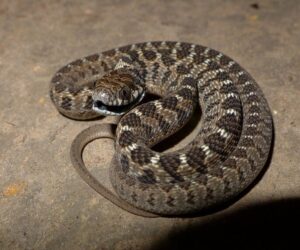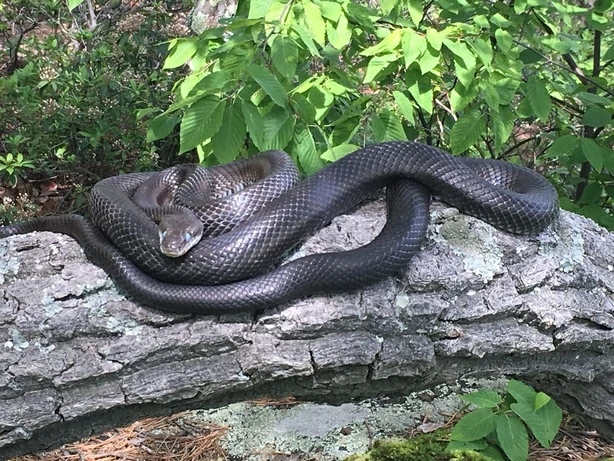Finding snake skin in your house can be scary. Many people feel worried or even panic when they see it. You might think there are dangerous snakes hiding in your home. But the truth is not always as bad as it seems.
If you find snake skin in your house, it means a snake has been there; either recently or in the past. It doesn’t always mean the snake is still inside, and it doesn’t mean your home is unsafe. Most of the time, the snake was just passing through, or it found a quiet place to shed. In many cases, the snake is harmless and may already be gone.
This guide will help you understand what it means when you find snake skin.
We will look at why snakes shed their skin and what you should do about it. We will also talk about when you might need help from experts.
Why Do Snakes Shed Their Skin?
Before we talk about finding snake skin, let’s understand why snakes do this. All snakes shed their skin. This is normal and healthy for them. Scientists call this process “ecdysis.”
Snakes shed their skin for several reasons. First, they need to grow. As snakes get bigger, their old skin becomes too small.
Second, shedding helps them get rid of bugs and dirt on their skin. Third, it gives them fresh, new skin that works better.

Most snakes shed their skin several times each year. Young snakes shed more often than old ones.
This is because they are growing faster. The weather and the snake’s health also affect how often they shed.
How Do Snakes Shed Their Skin?
The shedding process is quite interesting. It starts when the snake’s skin begins to separate from the new skin underneath.
This happens because of a protein called keratin. As the snake grows, this protein builds up and causes the old skin to loosen.
When the skin is ready to come off, the snake looks for rough surfaces. They rub against rocks, logs, or even walls.
This helps them peel off the old skin. The skin usually comes off in one piece, like taking off a sock.
The whole process can take a few days to complete. During this time, the snake might look cloudy or dull. Their eyes might also look milky. This is normal and shows that shedding is happening.
What Does Finding Snake Skin Mean?
Now let’s talk about what it means when you find snake skin in your house. There are several things this could tell you about your home and surroundings.
A Snake Has Been There
The most obvious thing is that a snake has been in or near your home. This might sound scary, but it’s not always bad news.
Snakes don’t just randomly enter homes. They come looking for specific things.
Finding snake skin doesn’t mean your house is full of snakes. It just means at least one snake has been there recently.
The snake might have left already, or it might still be around somewhere.
Your Home Offers Good Habitat
If a snake chose to shed its skin in your house, it means your home provides what snakes need.
This includes shelter, warmth, and safety. While this might worry you, it can also tell you something good about your living space.
Snakes are actually quite picky about where they live. They need the right temperature and humidity.
They also need places to hide from predators. If a snake finds your home suitable, it might mean your house is well-built and comfortable.
There Might Be Rodents Around
One important thing to consider is food. Snakes eat small animals, especially mice and rats. If a snake is living near your home, it’s probably because there’s food nearby.
This could mean you have a rodent problem. Mice and rats can cause damage to your home and spread diseases.
In this case, the snake might actually be helping you by eating these pests.
However, the snake might also be there for other reasons. It could be looking for shelter during cold weather.
It might be hiding from predators. Or it could just be passing through your area.
Is Snake Skin Dangerous?
Many people worry about whether snake skin is dangerous to touch or be around. The good news is that snake skin itself is not harmful. It’s just dead skin, similar to what humans shed every day.
The skin doesn’t contain any poison or venom. Even if the snake that shed it was venomous, the skin itself won’t hurt you.
You can touch it without getting sick or injured.
However, there are a few things to keep in mind. The skin might carry dust or small particles that could bother people with breathing problems.
If you have asthma or allergies, you should be careful when handling snake skin.
Also, while the skin isn’t dangerous, it might tell you that there’s a snake nearby. That snake could potentially be dangerous, depending on what type it is.
What Should You Do If You Find Snake Skin?
If you discover snake skin in your house, don’t panic. There are several steps you can take to handle the situation safely and effectively.
Step 1: Look at the Situation
First, examine where you found the skin. Look at the area carefully. Is it in a place where snakes might hide?
Common places include basements, garages, sheds, or crawl spaces.
Check if the skin looks fresh or old. Fresh skin is usually soft and flexible. Old skin becomes dry and brittle.
Fresh skin might mean the snake is still nearby. Old skin could mean the snake has moved on.
Take note of the size of the skin. This can help you understand how big the snake is. Larger skins come from larger snakes, which might be more concerning.
Step 2: Try to Identify the Snake
If possible, try to figure out what kind of snake shed the skin. This is important because different snakes pose different levels of risk.
Many snakes found around homes are harmless. They actually help by eating rodents and other pests.
You can look up local snake species online or in field guides. Pay attention to the pattern and size of the skin.
If you’re not sure, you can take a photo and ask local wildlife experts for help.
Remember that most snakes are not dangerous to humans. Even if you can’t identify the species, try not to assume the worst.
Step 3: Clean Up Safely
When you’re ready to remove the skin, do it safely. Wear gloves to protect your hands. You can use rubber gloves or work gloves.
Use a vacuum cleaner or pick up the skin with a plastic bag. Put the skin in a sealed bag before throwing it away.
This prevents any dust or particles from spreading around your home.
After removing the skin, clean the area thoroughly. Use a disinfectant to clean surfaces where the skin was found. This helps remove any bacteria or odors.
Step 4: Find and Seal Entry Points
After cleaning up, look for ways the snake might have entered your home. Check around doors, windows, and the foundation.
Look for gaps, cracks, or holes that a snake could fit through.
Snakes can squeeze through surprisingly small openings. They can fit through any hole that’s big enough for their head.
Pay special attention to areas near the ground.
Use caulk, steel wool, or other materials to seal these openings. This helps prevent snakes from entering your home in the future. It also helps keep out rodents and other pests.
Step 5: Make Your Yard Less Attractive to Snakes
To keep snakes away from your home, make your yard less appealing to them. Snakes like places where they can hide and find food.
Keep your grass short and remove piles of leaves, wood, or rocks. These provide hiding spots for snakes.
Also, remove sources of food like pet food left outside.
Fix any water leaks or standing water. Snakes need water to survive, and wet areas also attract the insects and small animals that snakes eat.
Store firewood and other materials away from your house. If you must keep them nearby, stack them neatly and check them regularly.
When to Call Professionals
Sometimes, you might need help from experts. Here are some situations where you should consider calling a professional wildlife removal service or pest control company.
If you see an actual snake in your home, don’t try to catch it yourself. This can be dangerous, especially if you’re not sure what type of snake it is.
Professionals have the tools and experience to remove snakes safely.
If you keep finding snake skins in your home, this might mean you have an ongoing problem.
A professional can help you figure out why snakes are attracted to your property and what you can do about it.
If you live in an area with venomous snakes, it’s especially important to get professional help.
Even if the snake skin looks like it came from a harmless snake, it’s better to be safe.
If you’re uncomfortable handling the situation yourself, that’s okay too. There’s no shame in asking for help.
Professionals can give you peace of mind and make sure the job is done right.
Understanding the Bigger Picture
It’s important to remember that snakes play an important role in nature. They help control populations of rodents and other small animals.
This can actually benefit humans by reducing crop damage and disease spread.
Most snakes are shy and try to avoid humans. They usually only come into homes when they’re looking for food, shelter, or water.
By addressing these needs, you can often solve snake problems without harming the animals.
Finding snake skin doesn’t mean you’re living in a dangerous place. It just means you’re sharing your environment with wildlife.
With proper precautions and understanding, you can coexist safely with these animals.
Conclusion
Finding snake skin in your home can be startling, but it’s usually not a major cause for concern.
The skin itself is harmless, and its presence simply indicates that a snake has been in the area recently.
By understanding why snakes shed their skin and what attracts them to homes, you can take appropriate steps to address the situation.
This includes cleaning up safely, sealing entry points, and making your property less attractive to snakes.
Remember that most snakes are beneficial and pose little threat to humans.
However, if you’re unsure about the situation or uncomfortable handling it yourself, don’t hesitate to contact professionals.
Hi, my name is Ezra Mushala, i have been interested animals all my life. I am the main author and editor here at snakeinformer.com.

